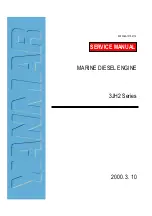
25
EN
24
PHOT C
Input (N.C. contact) for safety devices (e.g. photocells).
In the closing phase: Configuration through PHCL Logic.
In the opening phase: Configuration through PHC Logic.
25-26
DAS
Input, safety edge
Resistive edge: “DAS” Jumper closed
Mechanical edge: “DAS” Jumper open
When the edge is activated, the gate movement is stopped and reversed for about 3s.
If the edge is not in use: “DAS” Jumper open, 25-26 terminals are short-circuited.
27-28-29
Motor
Connection of motor 230Vac - single-phase:
27-Phase/28-Common/29-Phase
27-30
Capacitor
Connection of capacitor
31-32
Blinker
Connection of blinker, 230Vac 40W max.
The control unit is equipped with an built-in radio module for the reception of variable code controls, with ARC (Advanced Rolling-
Code) or fixed code, 433.92 MHz frequency.
To check connections:
1) Cut-off power supply.
2) Manually release the wing, move it to approx. half-stroke and lock it again.
3) Reset power supply.
4) Send a step-by-step control signal by pressing the button or the remote control key.
5) The door/gate should move in the opening phase. Conversely, use the MINV logics to invert the opening direction.
6) Cut-off and restore power supply.
10.2) RUN SELF-LEARNING AND ANTI-CRUSHING DEVICE SETTING
When operator assembly and wiring is completed, parameters and logic are programmed, self learning allows the operator to learn the stroke and
torque.
Enter menu Auto and press the button < PGM >, PUSH will be displayed.
Press again the button < PGM >: self-learning is beginning: PRG will be displayed, and the control panel completes some opening/closing cycles.
When the procedure is completed OK will be displayed.
This procedure can be followed from any position of the gate/door leaf and can be stopped at any moment by pressing keys <+> and <-> at the same
time, or through the activation of STOP/PHO/PHA/DAS/PP/PED inputs.
If the procedure is not successful, the wording ERR appears. Check that no obstacles or frictions are present.
10.3) PROGRAMMING
The programming of the various functions of the control unit is carried out using the LCD display on the control unit and setting the desired values
in the programming menus described below.
The parameters menu allows you to assign a numerical value to a function, in the same way as a regulating trimmer.
The logic menu allows you to activate or deactivate a function, in the same way as setting a dip-switch.
Other special functions follow the parameters and logic menus and may vary depending on the type of control unit or the software release.
To access programming:
1 Press the button <PG>, the display goes to the first menu, Parameters “PAR”.
2 With the <+> or <-> button, select the menu you want (
PAR
>>
LOG
>>
RADIO
>>
NMAN
>>
RES
)
3 Press the button <PG>, the display shows the first function available on the menu.
4 With the <+> or <-> button, select the function you want.
5 Press the button <PG>, the display shows the value currently set for the function selected.
6 With the <+> or <-> button, select the value you intend to assign to the function.
7 Press the button <PG>, the display shows the signal “
PRG
” which indicates that programming has been completed.
Notes:
Simultaneously pressing <+> and <-> from inside a function menu allows you to return to the previous menu without making any changes.
Simultaneously pressing <+> and <-> when the display is switched off shows the card software release.
Hold down the <+> key or the <-> key to accelerate the increase/decrease of the values.
After waiting 30s the control unit quits programming mode and switches off the display.
10.4) PARAMETERS, LOGIC AND SPECIAL FUNCTIONS
Nelle tabelle di seguito vengono descritte le singole funzioni disponibili nella centrale.
PARAMETERS (
PAR
)
MENU
FUNCTION
MIN-MAX-(Default)
MEMO
TCA
Automatic closure time. It is activated only with “
TCA
”=ON logic.
At the end of the preset time, the control unit controls a closure operation.
3-240-(40s)
TM
Operating time. It is activated only with logics ENC : OFF.
The operating time is adjusted during motor opening and closing phases.
1-250-(90s)
Tped
The passage left open by the gate leaf during the partial opening (pedestrian) is adjusted.
5-100-(15%)
TSM
The area covered by the gate during the braking phase is adjusted.
0 = braking disabled.
0-100-(10%)
PMo
The torque applied to the motor in the opening phase is adjusted.*
1-99-(40%)
PMC
The torque applied to the motor in the closing phase is adjusted *.
1-99-(40%)
Summary of Contents for YAK 20 OM 115
Page 2: ...2 ...
Page 3: ...3 1 2 325 250 570 195 149 A B 143 33 3 3 5 m m 2 2 0 m m 7 0 m m 5 0 m m C ...
Page 4: ...4 3 4 B F T V Z R ...
Page 5: ...5 5 7 2 mm 6 P S M C ...
Page 6: ...6 8 11 9 10 GND L N C L ...
Page 11: ...11 OPEN OPEN OPEN OPEN MINV On MINV Off 17 BAr On OPEN PHOT OP BAR 18 ...
















































